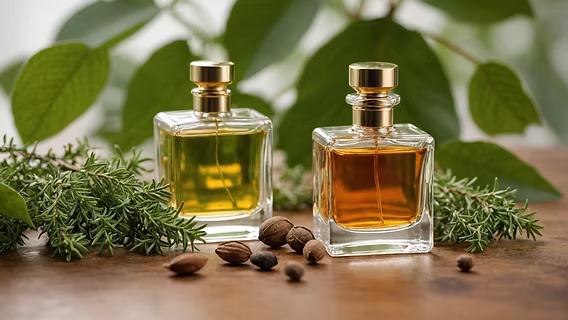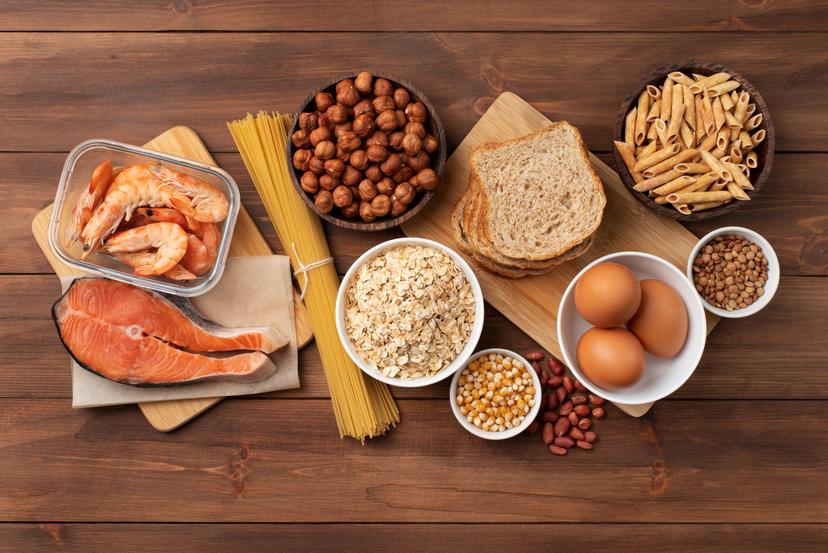June 2025
A Whiff of Change: Unveil the Aroma of Opportunity in India

The essence of a fragrance goes beyond scent. It’s an emotion, a memory, and currently, a booming business in India. With a remarkable CAGR of 15.23%, the India Perfume Market, valued at USD 281 million in FY2024, is forecasted to reach USD 873.3 million by FY2032. This explosive growth trajectory reflects a changing consumer culture, rising disposable income, and a newfound obsession with grooming scent trends and individuality.
Fragrance Science: The Alchemy of Perfumes
India is a land of scent legacy with scent culture from attars of Kannauj to modern blends. Scientifically, perfumes are created using a careful mixture of 10–20% essential oils blended with alcohol, and occasionally water or fixatives. According to the Fragrances and Flavours Association of India, there are over 6,000 ingredients available for fragrance formulation.
This technical depth allows brands to innovate with complex olfactory layers—top notes for first impressions, heart notes for body, and base notes for longevity. Indian perfumers today balance traditional floral bases with modern citrus, woody, or gourmand twists.
Several socio-economic trends are converging to fuel India’s perfume boom:
- Aspirational middle-class growth: With increasing disposable income and exposure to global trends, fragrances are now considered essential rather than luxury.
- Millennial influence: This tech-savvy, image-conscious generation makes up over a third of India’s population and is redefining grooming habits.
- Lifestyle evolution: Yoga, gym routines, and a growing focus on personal hygiene are making perfumes a daily staple.
- Digital retailing: E-commerce platforms like Nykaa, Amazon, and Myntra have democratized access to both luxury and affordable scents.
These shifts are not just expanding the user base but also intensifying the demand for customized, affordable, and sustainable perfumes.
Unlike previous generations that reserved perfumes for weddings or festivals, millennials view it as part of daily self-expression. With an average age of 28.4 and increasing wallet share, they prefer easily shoppable, repeatable SKUs via online channels, are fragrance brand loyalists and choose fragrances to match moods, events, or even seasons. Internet penetration has turned them into well-informed buyers, and they often trust user reviews, influencer endorsements, and perfume trial packs before purchase.
Digital Transformation
India’s perfume industry is undergoing a significant transformation, driven in large part by its embrace of digital-first strategies that are reshaping how fragrances are marketed, discovered, and sold. In a market once dominated by traditional retail and word-of-mouth promotion, digital fragrance shopping have opened up entirely new pathways to reach and engage consumers, especially younger, tech-savvy audiences who demand more from their shopping experiences.
One of the most impactful shifts has been the integration of visual storytelling through short-form content. Platforms like Instagram Reels and YouTube Shorts are no longer just spaces for passive browsing—they’ve become dynamic tools for brand building. Perfume companies use these platforms to create immersive, aspirational content that visually narrates the experience of a fragrance—often pairing lifestyle aesthetics, behind-the-scenes production clips, and user testimonials with the emotional undertones of their scents. This visual approach helps consumers form connections with products that they cannot physically smell through a screen, substituting olfactory engagement with ambiance, mood, and relatability.
Simultaneously, influencer marketing has become a linchpin in perfume promotion. Collaborations with grooming experts, fashion bloggers, and wellness influencers allow brands to gain credibility and penetrate highly engaged communities. These creators often have niche audiences that trust their recommendations, making them ideal partners for launching new products, limited editions, or even co-branded collections. The storytelling element in fragrance influencer trends—such as unboxing videos, first-impression reels, or fragrance layering guides or scent branding tips, similar reasonable options—adds an authentic voice that traditional advertising lacks.
These innovations are supported by broader shifts in marketing spend. According to the Mobile Marketing Association, over 30% of marketers now dedicate more than 60% of their budgets to digital channels, and this statistic is especially relevant in the perfume segment. The focus has moved away from static advertisements to targeted, performance-driven strategies across Google, Meta, and emerging places like Tira and Nykaa Luxe.
E-commerce, in this context, is not just a distribution channel. It is the core enabler of growth. Online platforms allow brands to offer personalized shopping journeys with features like curated personalized perfume kits, subscription models, perfume product reviews, and AI-perfumery based recommendations. This is particularly valuable in the context of perfumes, where online scent discovery is subjective and sensory. Consumers can now explore a vast variety of both Indian and international brands, compare prices, read real user feedback, and make informed decisions from the comfort of their homes.
Further accelerating this trend is the rise of Direct-to-Consumer (DTC) models, where brands bypass traditional retailers to sell directly via their websites or mobile apps. This not only helps keep costs lower—thus improving affordability—but also gives brands more control over customer relationships, enabling them to build loyalty through exclusive offers, personalized communication, and community engagement.
India’s niche perfume market is no longer reliant on mere shelf presence or celebrity endorsements. It has become a digitally vibrant, highly interactive market where brands must blend creativity, technology, and consumer empathy to thrive. This digital pivot is not just a reaction to changing habits—it is a proactive reinvention of how India experiences and consumes fragrance.
New Wave of Fragrance Accessibility
In September 2024, Titan’s fragrance brand SKINN launched a bold new line called ‘24 Seven’, priced for affordability but crafted with premium scent profiles. The launch targets 2.5 million users by FY2025, marking a direct response to India's price-sensitive but quality-seeking millennials.
This is just one of many examples where national players are competing head-to-head with international brands like Davidoff, Calvin Klein, and Guess, who have also expanded their India presence.
As pointed out by Samir Modi, Founder and MD of Colorbar Cosmetics, younger consumers are no longer solely price-driven. Indian brands are stepping up by offering premium-quality fragrances through smart strategies such as smaller, travel-sized packaging to improve affordability. Brands now focus on fresh, vibrant scents that connect with youth fragrance demand while leveraging DTC fragrance brands to maintain global standards without luxury markups.
At Plum BodyLovin', quirky branding and localized ingredient sourcing have allowed products like Hawaiian Rumba to succeed at price points below Rs 800. The brand keeps pace with global trends by introducing variants like Vanilla Caramello, incorporating notes like pistachio and caramel.
Other Indian innovators such as Whiskers India and Inatur offer semi-premium products and are natural scent brands. Lavie Luxe and Nisara focus on fragrance packaging trends, scent diversity, and influencer-led strategies to connect with young consumers.
Aqualogica's Refresh+ body mists and Tira's wide offerings reveal that luxury is no longer limited to metro cities. As Director Kadambari Lakhani of Baccarose Perfumes notes, "India is undergoing a transformative moment where luxury and self-expression intersect."
The Retail Boom and International Surge
Retailers like Nykaa and Tira report surging demand in prestige fragrances. Nykaa, for instance, saw a 74% increase in sales in this segment between FY22 and FY25. It now aims to capture 19% market share in the category.
Luxury brands like Jo Malone, Diptyque, Billie Eilish, and The Merchant of Venice are now entering the Indian market, reflecting growing interest in high-end olfactive experiences. Entry-level premium (Rs 2,000–4,000) remains popular, while Gen Z consumers are increasingly willing to splurge on ultra-luxury when the brand story resonates.
India’s Scented Future
The Indian perfume market is becoming a vibrant blend of affordability, accessibility, and aspiration. With expanding distribution, data-backed personalization, and brand storytelling, the segment is evolving from a luxury niche into an everyday essential.
As Indian and international players compete and collaborate, the future smells not just fragrant—but limitless.
Subscribe to our newsletter
Promise we won't spam you.
Share
Read More

July 2025
Gluten Be Gone: The Rise of the Gluten-Free Wave in Asia-Pacific’s Food Landscape
Asia-Pacific gluten Free Food and Beverages market is projected to witness a CAGR of 9.14% during the forecast period 2025-2032, growing from USD 2.16 billion in 2024 to USD 4.34 billion in 2032.

July 2025
India’s Quick Commerce Boom: The Rise, Race, and Reality of 10-Minute Delivery
Valued at USD 3.05 billion in FY 2024, India’s Q commerce market is not just growing, it’s exploding. Forecasts suggest it could soar to USD 13.38 billion by FY 2032, growing at a CAGR of 20.3%.

July 2025
India’s E-Gaming Market: A Digital Playground Set to Explode
Indian e-gaming market is set to experience a whopping 25.37% CAGR during the forecast period from FY2024 to FY2031, growing from USD 1.71 billion in FY2023 to a massive USD 10.44 billion by 2031.
REACH US



